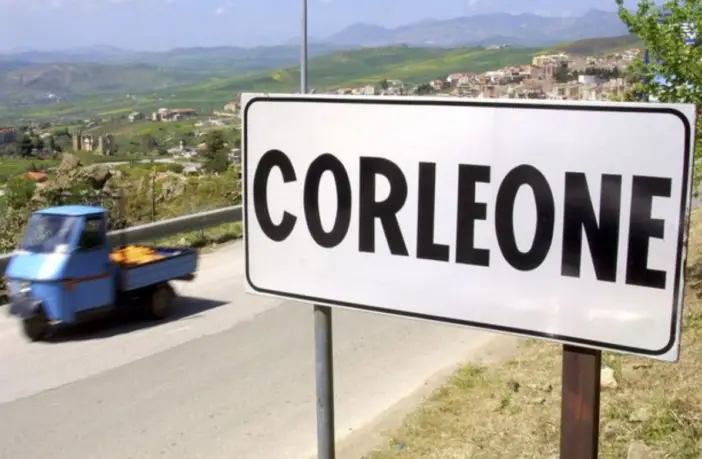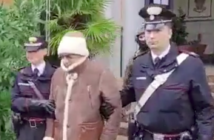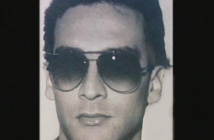A picture-perfect Italian town in the foothills of Sicily’s picturesque countryside, Corleone has a ruthless past.
Corleone consists of bell towers, ornate churches, and a breathtaking view of the valley below. A maze of narrow cobblestone streets leads to small family-run cafes and bakeries.

Corleone, a picture-perfect Italian town in the foothills of Sicily’s picturesque countryside, hides a notorious past
Some of Cosa Nostra’s most notorious bosses were born in this sleepy little town. Over 30 years ago they went on to unleash horrific violence which immediately gained the attention of the authorities in Rome.
Walking around the streets there are plenty of references to Mario Puzo’s fictional mafia boss, Don Vito Corleone, from his 1969 novel The Godfather.

Walking around the streets there are plenty of references to Mario Puzo’s fictional mafia boss, Don Vito Corleone, from his 1969 novel The Godfather.
If you visit Corleone, you will have no trouble finding all sorts of Godfather merchandise. Many businesses also have Godfather posters on the wall as they pay tribute to Marlon Brando’s character.
As peaceful as Corleone is now, it was not always like that. It used to be the headquarters of the Corleonesi crime family ran by Toto Riina and Bernardo Provenzano. As teenagers, they got an early start to their organized crime careers and quickly rose through the ranks. Eventually, they took control of the extremely lucrative trans-Atlantic drug trade by killing members of rival mafia families.

Toto Riina in 1993 after being arrested
Known for his vicious temper and psychopathic behavior, Riina, appropriately nicknamed “The Beast”, ordered bombings, shootings, and killing of at least 150 people. The real number is said to be much higher.
It is also alleged that Riina ordered his then 17-year old son to kidnap a businessman and strangle him to death so that he could be inducted into the mafia.

Bernardo Provenzano after his arrest in 2006 near his hometown of Corleone
The people of Corleone have tried hard to shake their beloved town of this violent reputation. Only a small few celebrate its ties to the mafia which go back over 100 years. In fact, it’s the mafia who the locals blame for high unemployment and systemic corruption over the past few decades.
Linda Vetrano is a local activist who also offers walking tours of Corleone. She does not like the stereotype of the Godfather saying that what she tries to do is the complete opposite. “We try to show the real face of the mafia and take away the romantic side”.
One word summed up the local people’s anger and frustration – ‘pizzo’. This is the name given to protection money that local businesses must pay to the mafia. Failure to do so WILL have dire consequences including arson, vandalism, and death.
The mafia is nowhere near as strong as it used to be which has enabled the local businesses to not feel as much pressure to pay. Despite this lower threat level, many businesses still do pay their protection money, just in case.
Unfortunately, the high unemployment rate in the area makes recruitment easy. Many young, impressionable men join the mafia because they have nowhere else to turn as it becomes the only way for them to make money and earn some respect.
In the 1980s there was a huge government crackdown on the mafia which prompted Riina to order assassinations in Sicily and on the Italian mainland.
Then, in 1992, the country was shocked and appalled about the murder of Sicily’s chief anti-mafia prosecutor Giovanni Falcone and his wife. They were killed when their car exploded just outside of Palermo.

Giovanni Falcone, Sicily’s chief anti-mafia prosecutor was killed by the mafia in 1992
Just a few weeks later, another explosion killed Falcone’s childhood friend, magistrate Paolo Borsellino as he visited his mother’s house.
Riina and Provenzano had committed many crimes around the country for decades, but these two killings really escalated the pressure on the government to arrest them.
Riina managed to avoid capture until 1993. After a highly publicized trial, he was given 26 life-sentences which he served in solitary confinement.
Riina never showed any remorse for his crimes. In fact, after he died in 2017 at the age of 87, his lack of remorse compelled the local Catholic priest to deny him a church funeral saying, “I can understand the suffering of Riina’s family with this loss. But he was the head of the mafia and no sign of redemption ever came from him.” He was privately buried in Corleone.
Provenzano took control after Riina’s arrest in 1993. In 2006 he was eventually captured near Corleone. He was given 20 life sentences plus 49 years and one month, and solitary confinement for 33 years and six months. He died of bladder cancer in 2016 and his ashes were buried in his family tomb in Corleone.
Corleone also has an anti-mafia museum. Operator Marilena Bagarella says she has seen huge progress over the years as the town tries to shake its grisly legacy. Ironically, the museum is located on property that was seized from Riina, whose family members still live just around the corner.







